The other side of the waiting room door
Listen-

-

-
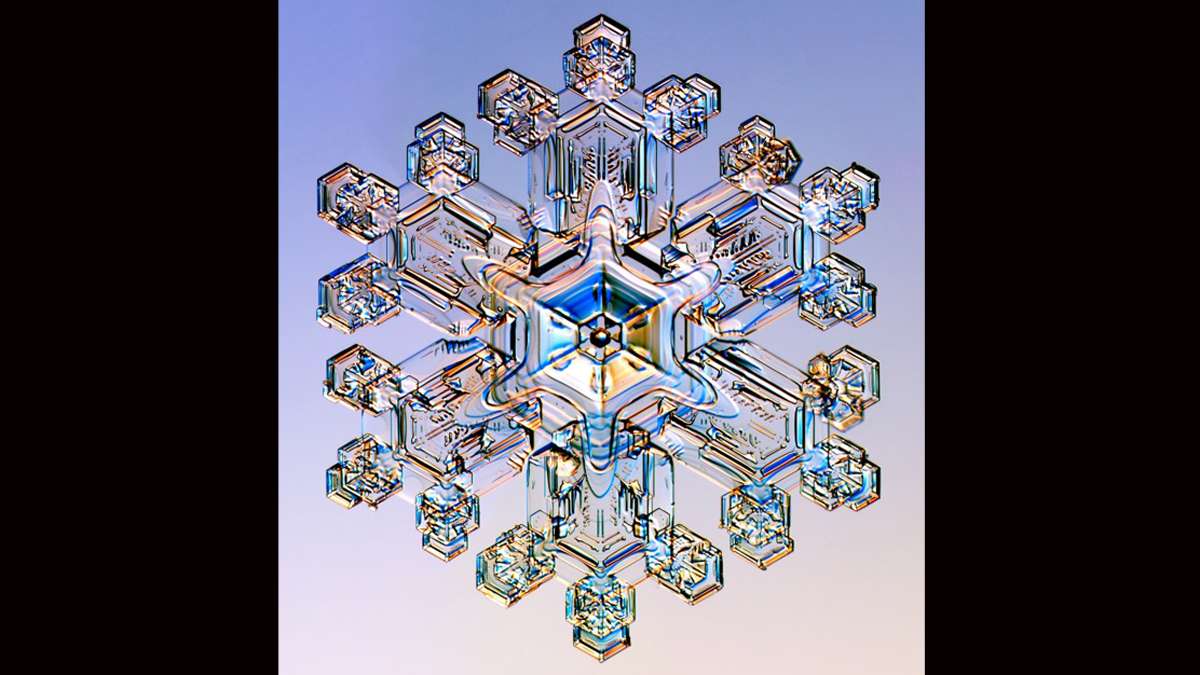
-
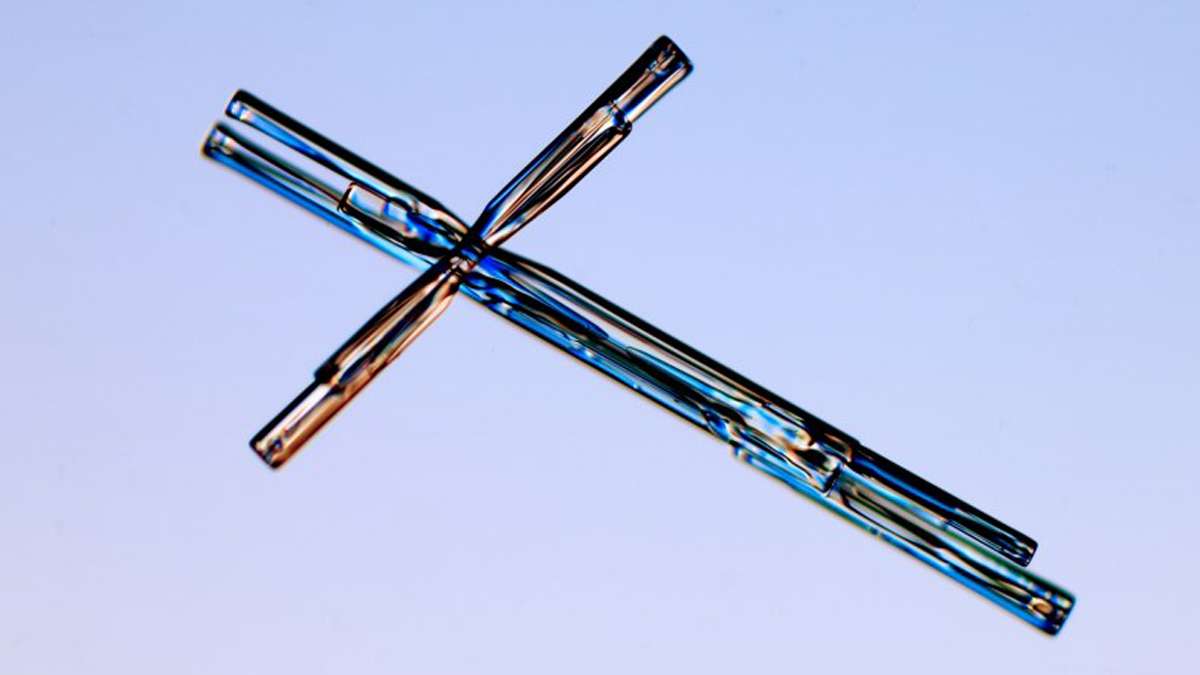
-

-
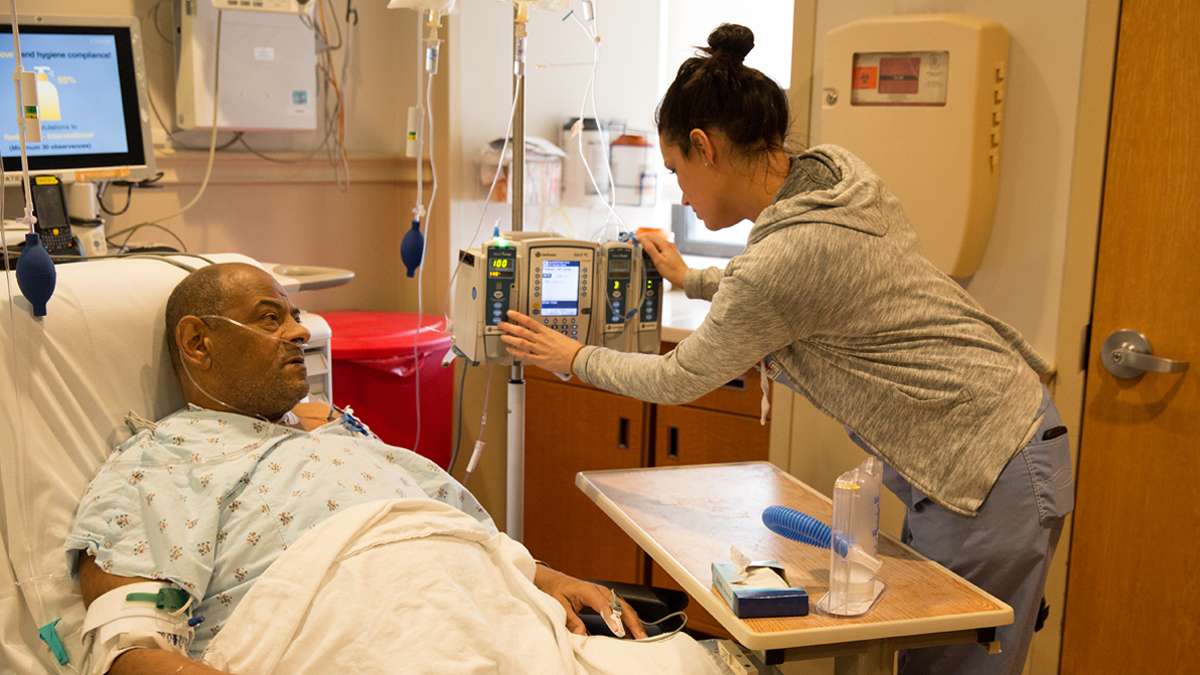
-

-

-

-

-
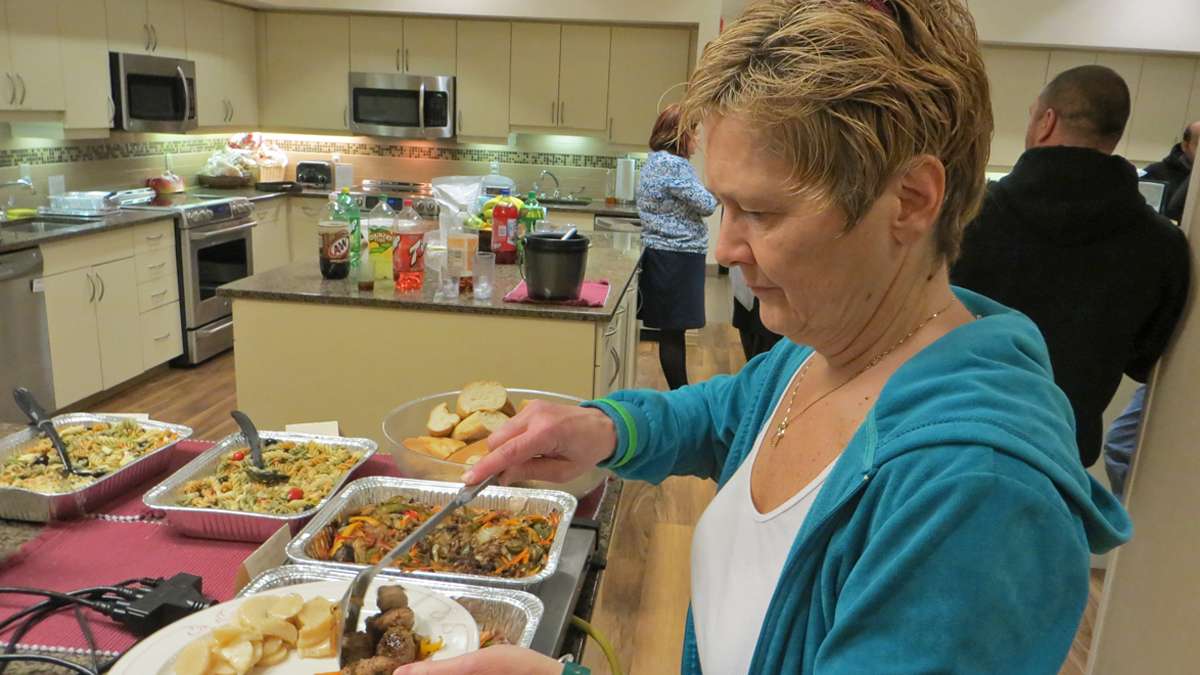
-
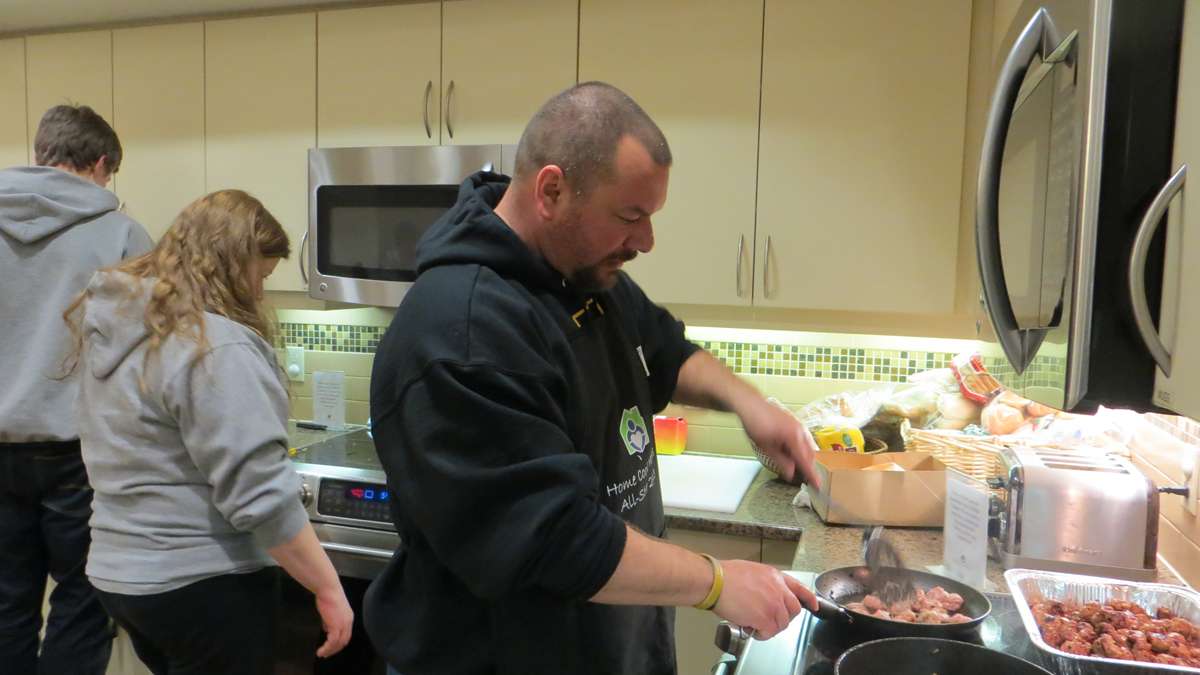
-

-
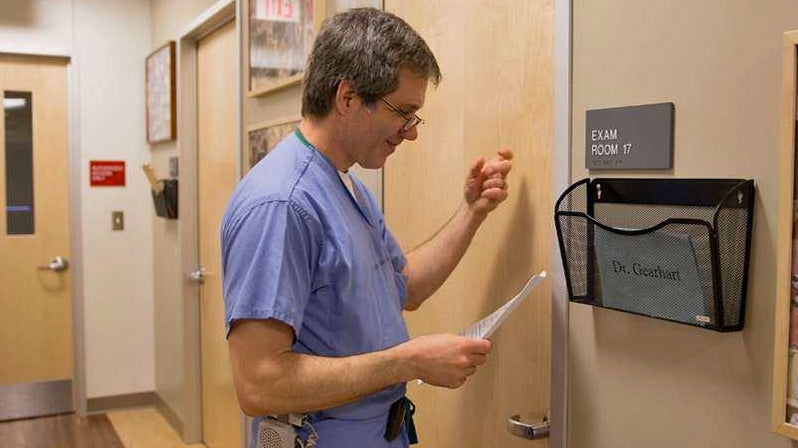
(Lindsay Lazarski/for The Pulse
-

-
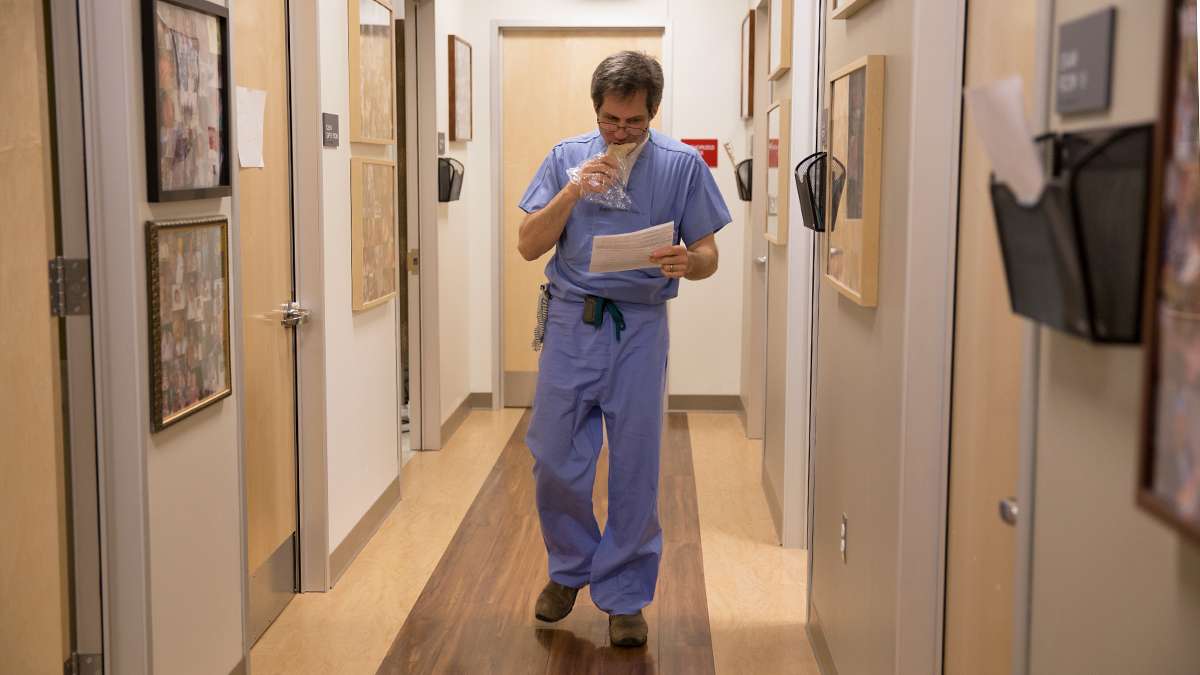
-

Dr. Gearhart of Penn Ob/Gyn and Midwifery walks us through the complicated shuffle of his daily appointment routine.
Wait times at doctors offices are a top annoyance for patients. Leafing through magazines, thinking about all of the work that’s piling up at the office, hoping they will call your name next – it can be aggravating. What’s the hold-up?
The Pulse spent a morning on the other side of the waiting room door, with Dr. Peter Gearhart of Penn Ob/Gyn and Midwifery, a busy practice in Old City.
Getting there on time
On a recent Monday morning, Gearhart was racing across snowy city streets with three little dogs and one of his three young sons in tow. On his way to his practice, Gearhart dropped the dogs off at his wife’s office, dropped his son off at school, then he got a call from Pennsylvania Hospital. A patient he operated on the previous week was ready for discharge – and staff there wanted to know if he wanted to see her before she left.
He said to let the patient go home, and to tell her to schedule an appointment with him in a few weeks, but moments later, he changed his mind.
“We should see her, the problem is I didn’t get to see her over the weekend, and it’s not cool, to not see her before she goes home,” he said. “You don’t want just anybody to tell you you’re okay, you want to hear it from the surgeon that operated on you.”
He raced into the hospital, saw his patient, and minutes later, was back on his way toward his practice, where he arrived a few minutes late.
Playing Tetris, juggling schedules
Lead medical assistant Catrena Drake was waiting for him, reviewing a long list of patients scheduled from 8:45 a.m. to 4:15 p.m. Drake weighs patients, takes their blood pressure, and does a quick overview of their concerns. She also keeps Gearhart on track, and patients flowing in and out of five different exam rooms. She is constantly checking a computer screen where different colored dots tell her where patients are.
“It is like playing Tetris,” said Drake. “I’m always refreshing the screen, looking for the schedule, changing patients’ appointment times.”
Everything is in flux, at all times.
“A five minute visit could turn into a 30-minute visit. Or what you think is a 20-minute visit is actually a 5-minute visit,” she said.
By about 9:30 on this morning, things began to back up. A pregnant patient who came in for a so called non-stress test that monitors the baby’s heart rate was not getting a good reading, and needed an ultrasound. That added ten minutes to her visit. Another patient who came in for a routine visit needed extra time because of an issue.
“These two events are pushing me behind schedule,” said Gearhart.
“As of right now, he’s actually only about 15 minutes behind, that’s because two patients haven’t shown up yet, if they show up, different story,” said Drake.
No shows are always a good thing and a bad thing, said Gearhart. “It catches up the schedule, but somebody is not getting seen and they have an issue.”
But then – the late patients walked in. One 45 minutes late, the other 30 minutes. The practice does not turn away late patients – they just might get bumped and have to wait, but it causes problems.
“If you are a patient waiting, you don’t know that the other patient came in late, and we can’t share that,” said Drake. “So, you just have to work through it, and apologize.”
Gearhart raced from room to room, in an attempt to catch up.
Then, another problem: “This is a classic delay,” said Gearhart. “I just saw a patient for a routine screening, an annual exam, and we have discovered a problem today.” The problem requires minor surgery, which he has to review with the patient, and there’s paperwork to be filled out. He could ask the patient to come back, but opts to deal with the issue right then and there. “It’s a real problem now for the patient, so to tell her I don’t have time to deal with it would be very insensitive.”
Gearhart grabbed the needed paperwork, and took his first rest room break of the morning.
No time for lunch
After this, Gearhart stayed behind schedule for the rest of the morning. “Sorry I’m late” he said to every patient as he entered the room. Lunch was supposed to happen somewhere around noon, but Catrena Drake knew that wouldn’t happen. “He is finishing with his 11:30 patient now, and it’s 12:12,” she said.
After seeing 18 patients, he stepped into his office for five minutes to scarf down his lunch, or portable food, as he calls it. “It’s a burrito wrap with whatever is left from dinner, that gets thrown in there.”
He said a day in the office is the hardest part of his job, harder than a difficult birth, or an operation.
“Your brain is doing three or four different things at once,” he said. “While making sure you look the patient in the eye, and you let her talk; listening is very important.”
So – why doesn’t he just schedule fewer patients in a day? He says it’s not an option.
“Who would see those other patients?” he asked. “Expanded access to healthcare keeps even more patients waiting,”
And with that, he was on to round two: the afternoon patients.
WHYY is your source for fact-based, in-depth journalism and information. As a nonprofit organization, we rely on financial support from readers like you. Please give today.




